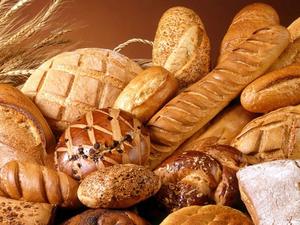
How to write
a bakery business
plan
Do you have a knack for baking up a storm for special and casual events with friends and family? Have you ever thought about doing this full-time as a career and making income from it? Here's how to start.
In this article...
- Why Is a business plan necessary for your bakery?
- What sections should you include in your business plan?
- 1. Executive summary
- 2. Company overview
- 3. Market analysis
- 4. Business offering/menu
- 5. Assign managerial roles
- 6. Marketing strategies
- Next, start getting online orders with Vev
- Writing a business plan is just the start - good luck!
It's essential to note that starting a bakery isn’t a piece of cake. Many people have struggled and failed to launch their bakery businesses. Or worse, some did launch their bakery, only for it to flop a couple of months or years later.
A solid bakery business plan distinguishes a successful bakery from those struggling. It is a vital aspect of your launching process. In fact, it is often recommended to have a plan in place before setting up the bakery.
To help you successfully launch your business, we’ve curated important elements of how to pen a bakery business plan in a step-by-step format. But first things first:
Why Is a business plan necessary for your bakery?
Not all business starts with a plan. However, those that do enjoy remarkable success. Why is a bakery business plan necessary? We look at the reasons below:
- It details everything you need. It’s easy to lose sight of what you need to run your business after launch. With a plan, you get clarity on what you need and what to do to make your operations seamless.
- It's a blueprint. Your bakery business plan acts as a blueprint for moving your business forward. Think of a business plan as a recipe or guidebook for creatively structuring your business. You won’t lose sight of your business goals and visions, as you’d keep using the plan as a benchmark to ensure you’re on the right track.
- It evaluates your business ideas. Documenting your financial projections, marketing strategies, and operations presents an opportunity to review for progress.
- It helps you get investment capital. Setting up a bakery business is relatively expensive. It would help if you had a business plan to secure sufficient funding from investors, banks, crowdfunding, and even your friends.
Now that you know how essential it is, how do you write a bakery business plan?
What sections should you include in your business plan?
A business plan for a bakery can consist of several sections, including but not limited to:
- Executive summary: a brief overview of the bakery's goals, products, services, and competitive advantages.
- Market analysis: a detailed analysis of the target market, competitors, and industry trends, including market size, demographics, and customer preferences.
- Marketing strategy: a plan for how the bakery will promote and advertise its products and services to attract and retain customers.
- Operations plan: a description of the day-to-day operations of the bakery, including the production process, inventory management, and customer service.
- Financial projections: a projection of the bakery's revenue, expenses, and profitability over a period of time, based on assumptions and estimates.
- Management team: an overview of the bakery's management team, including their skills, experience, and responsibilities.
By organizing a business plan into these sections, bakery owners can develop a comprehensive and strategic plan that addresses all key aspects of their business, and guides decision-making and operations going forward. Let's take a look at a couple of example sections we'd include in our bakery business plan.

1. Executive summary
The executive summary of your bakery business plan is a brief rundown of your business in its entirety. While it is the first thing a potential investor sees when they flip through your business plan, it is the last thing you write on the plan.
Getting your executive summary right is vital, as it determines if a potential investor will be willing to invest in your business.
This section should be able to answer the following questions:
- What is the name of your bakery?
- What service/products do you aim to offer?
- Why should people be interested in your business in a sea of competition?
- Who are your target customers?
- What is your marketing strategy?
- What is your financial plan for the bakery business?
Depending on your business's nature, this bakery business plan section can take up to 4 pages in length. But it should be summarized, as you will explore it in detail in subsequent sections. Your writing should be clear, consistent, and concise. Use bullet points where necessary.
2. Company overview
This is actually what you’d be writing first when drafting a bakery business plan. The company overview sections reveal why you want to open a bakery business and your driving force. This section explores some of the finer details of your bakery business.
Here, you identify if your business is a sole proprietorship, general partnership, or limited liability company (LLC). You also get to talk about your niche. Is it keto-friendly, gluten-free cookies and cakes? Is it freshly baked bread or frozen desserts?
The company overview also highlights your mission and vision statement. This showcases what you want to achieve with your bakery business. It also showcases your value proposition – which is why people should patronize your business.
Lastly, this section should list your short and long-term goals. Your goals should be time-bound, measurable, and quantifiable.
3. Market analysis
The section requires the most research, as investors and lenders will often reference it. The market analysis looks at how your bakery business fits into an industry filled with competition. It also explores your knowledge of the market and conclusions you can sum up.
You should include the following in your market analysis:
- SWOT analysis. This part highlights your strengths, weaknesses, opportunities, and threats.
- Competitive analysis. You outline the market landscape and where your bakery business fits in here.
- Customer demographics. Here, you highlight your target customers' age group and income level.
- Codes and regulations. You list the codes and regulations of your business and how you hope to comply with them.
4. Business offering/menu
In this section, you list the products and services your bakery business will be selling. Whether your offerings will be based on freshly baked cakes, bread, pastries, pies, or cookies, you need to go into detail to describe them.
Do you have special names you have coined for them? You can list them out as well. You can attach photos of the products if you have samples of how they’d look. Are you going to be selling complimentary items like coffee or tea? Be sure to include them in this section.
You also need to explore your rationale behind selling your listed goodies. What’s so special about them that will make your bakery the next big thing in your neighborhood?
Typically, this section answers the following questions:
- Are you going to be making niche products like gluten-free cakes?
- Do you plan to develop new recipes over time?
- Are you creating something different?
- Where do you intend to get your baking ingredients and equipment from?

5. Assign managerial roles
This section discusses your bakery business's business and organizational structure. Here, you will discuss in detail the nature of your business: whether it’s a sole proprietorship, corporation, partnership, or LLC.
Investors and stakeholders are also interested in this section of your bakery business plan, as it details their responsibilities should they invest in your business. It also makes them confident of your abilities in successfully running a bakery business.
This section gives a detailed overlay of hierarchical management. If the business has multiple owners, you will include their personal information and the percentage of their shares. This section also lists roles that you’d be assigning to subordinates.
Basically, this section should answer the following questions:
- Do you have a business partner?
- What percentage of the business do you plan to own?
- What percentage of the business will your partners own if it is a partnership?
- How many workers do you plan to hire?
- Will you be the face of the business or running the bakery behind the curtains?
- Will you be hiring an accountant or financial advisor for your business?
This section should be concise and unambiguous to remove any hint of confusion.
6. Marketing strategies
Without people knowing your business, how will they patronize it? This is what this section is about. This section in your bakery business plan template isn’t just relevant for you but your potential investors. They’d want to invest in a business where they’re confident of returns on investment.
This section will detail how you plan to penetrate the market and attract and retain customers with your baked goodies. The marketing plan will include all the marketing channels you plan to use for your marketing, including the corresponding budget.
The marketing strategy of your plan should typically include the following:
- Price of goods. This is the price of your goods in the market. After conducting market trends, you should include a price for your products.
- Products. What products are you providing with your business? How will you distinguish them from the competition during your bakery launch?
- Promotions. This includes the methods for promoting your business. It could be word of mouth, traditional media, social media, and recommendations.
- Place. This is the outlet where your products will be sold. It could be a physical café, counter style, food truck, home bakery, or online. Prepare a Financial Plan For Your Business
The financial plan for the bakery business details the figures you’d need to launch and run your bakery business. Investors and lenders also look out for this section, showing if you’ve done your homework.
You need to take your time to elaborate on the financial aspects of your business. It is not possible to be 100% certain how your business will fare in the near future (hello, COVID), but it looks to highlight the potential financial success of the business.
This section includes the following:
- Balance sheet.
- Cash flow statement.
- Income statement.
List the costs, supplies, monthly bills, salaries, and taxes needed for your business to run smoothly. It is important to be realistic with the figures to help secure investments.
Next, start getting online orders with Vev
After writing your bakery business plan and securing the funding for your startup, you need a software where your customers can view your products and place orders.
Vev is an innovative software and platform where you can create and customize a business page for your bakery. You can display your brand and attach product images and their corresponding prices.
Customers can look up available products, place orders, make payments, and select a pickup date and time. From the backend, you can view your bakery page to see which items got ordered, the pickup time, and the customer's contact information.
Vev is user-friendly, allowing you to navigate your page and add and edit the content on your page with ease. You get to assign your opening hours, including product descriptions, and customize your offerings seamlessly. And that’s just a piece of the pie.
Vev is totally free, giving you access to premium features. Your digital marketing strategy isn’t complete without software like Vev to seamlessly improve your bottom line.
Writing a business plan is just the start - good luck!
Writing a bakery business plan is vital for the success of your business and acquiring financial investors. It also keeps your operations organized, as nothing slips out of your control. And with an online ordering system like Vev, you’d be unbeatable.
We're certain you’d be able to create a bakery business plan that will keep your business aligned with its goals and make you accountable.
In this article...
- Why Is a business plan necessary for your bakery?
- What sections should you include in your business plan?
- 1. Executive summary
- 2. Company overview
- 3. Market analysis
- 4. Business offering/menu
- 5. Assign managerial roles
- 6. Marketing strategies
- Next, start getting online orders with Vev
- Writing a business plan is just the start - good luck!
Create your own page in 3 simple steps
Describe your business
Vev will create a custom page for you.
Get started
Click around to see how Vev works.
Customize your page
Add photos, descriptions and set your pricing.


